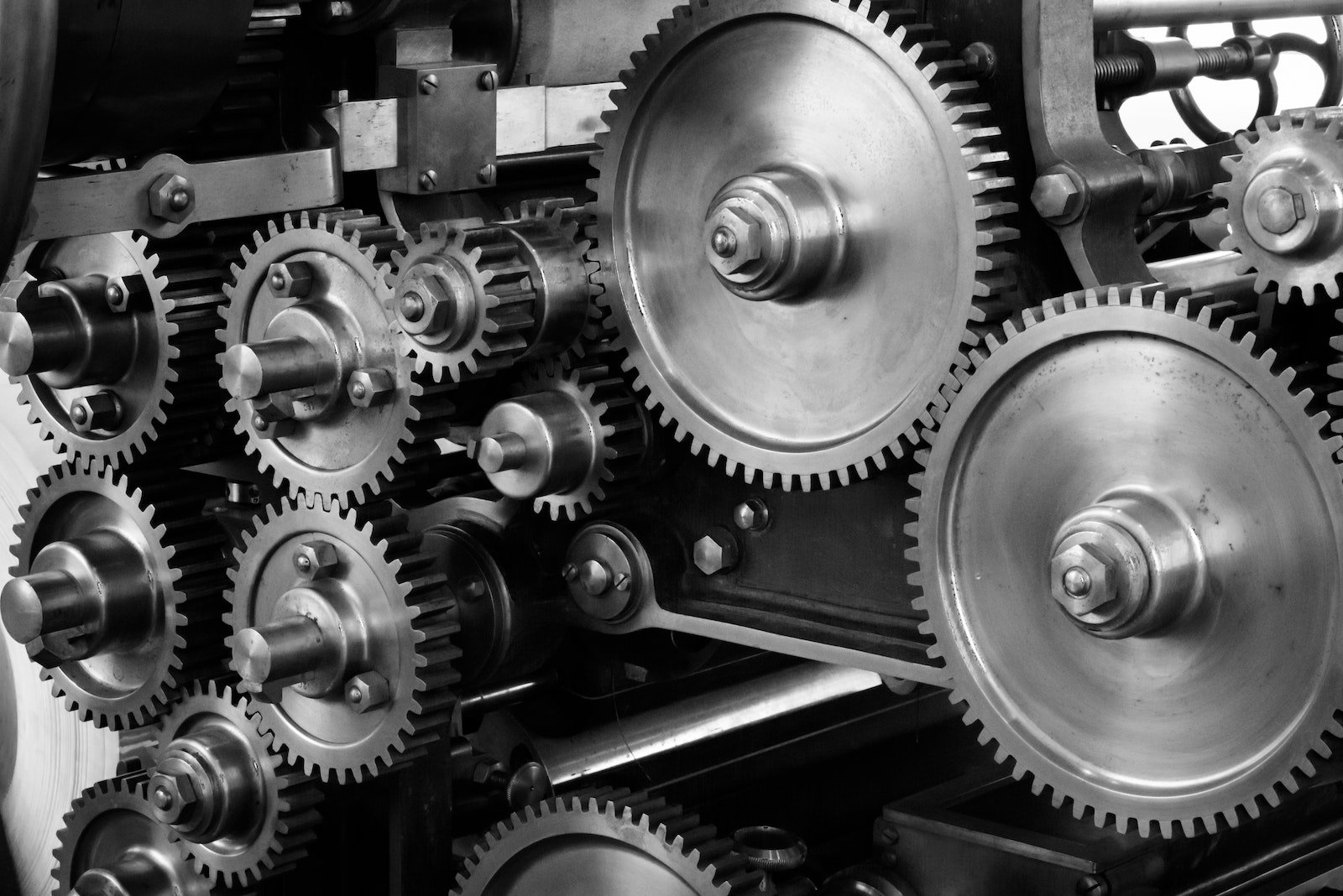Mechanics has come a long way since Galileo first observed the motion of a pendulum in 1581. His groundbreaking experiments and observations laid the foundations for a field of study that would eventually be taken up by such giants as Isaac Newton, who further developed this branch of physics with his three laws of motion. Today, mechanics is used to study virtually all aspects of motion, both on Earth and in space. In this blog post, we will explore how mechanics has evolved over time, from Galileo’s original observations to Isaac Newton’s intense theoretical work on the behavior of objects under varying forces. We’ll also discuss the modern applications of mechanics and its continued importance in unlocking our understanding of the universe.
The Emergence of Modern Mechanics: Galileo Galilei’s Contributions
Galileo Galilei was an Italian physicist and mathematician who made groundbreaking discoveries in both fields that laid the foundation for modern mechanics. In physics, Galileo formulated the law of inertia, which states that an object in motion will stay in motion unless acted upon by an external force. This law is a key part of Newton’s laws of motion, which form the basis of classical mechanics. In mathematics, Galileo developed the theory of indivisibles, which led to the modern day calculus. Calculus is a vital tool in physics and engineering, allowing for the precise analysis of complex problems. Without Galileo’s contributions, modern mechanics would not be possible.
The Development of Newton’s Laws: A New Era in Mechanics
In the late 1600s, Galileo Galilei developed the concept of inertia, which was a major step forward in the development of Newton’s laws of motion. Inertia is the tendency of an object to resist changes in its state of motion. This means that an object will continue moving in a straight line at a constant speed unless something causes it to change its direction or speed.
Galileo also developed the law of projectile motion, which states that a projectile (such as a ball or bullet) will follow a curved path when it is fired from a horizontal surface. This law is based on the fact that gravity affects objects differently depending on their mass. Heavier objects are more affected by gravity than lighter objects, and this difference causes them to follow different paths.
Newton’s laws of motion build on these concepts and describe how objects move in response to force. The first law, known as the law of inertia, states that an object will remain at rest or continue moving in a straight line at a constant speed unless acted upon by an external force. The second law states that the acceleration of an object is proportional to the force acting on it and depends on the mass of the object. The third law states that for every action there is an equal and opposite reaction.
These laws allowed for a much better understanding of how objects move and interact with each other. They also laid the foundation for classical mechanics, which is still used today to describe the motion of everyday objects. This new era of mechanics was a major development in the scientific world, and it helped to further understand the physical world around us.
Breaking Down the Principles of Newton’s First Law: Inertia and Its Implications
Inertia is the resistance of an object to change in its state of motion. It is the tendency of an object to remain at rest or in motion unless acted upon by an outside force. The concept of inertia was first introduced by Galileo Galilei in the early 1600s. At that time, it was used to describe the motion of objects on Earth, such as falling objects or moving carts. Newton’s first law of motion, which states that an object will remain at rest or in motion unless acted upon by an outside force, is based on the principle of inertia.
The implications of inertia are far-reaching. Inertia affects not only how objects move on Earth, but also how they move in space. It is responsible for the orbits of planets and stars and for the way objects behave when they are subjected to changes in speed or direction. Inertia is also a key factor in many everyday phenomena, such as car accidents and why it is difficult to start moving from a resting position.
Breaking down the principles of Newton’s first law can help us better understand its implications and how we can use it to our advantage.
The Relation between Force, Mass, and Acceleration: An Analysis of Newton’s Second Law
Newton’s second law states that the force exerted on an object is equal to the mass of the object times its acceleration. This law is a direct consequence of the laws of motion that Newton developed in his Principia Mathematica.
Newton’s second law is one of the most important laws in all of physics. It enables us to understand the relationship between force, mass, and acceleration, and how these quantities interact with each other. This law is the foundation of classical mechanics, and it is still used extensively in modern physics.
The derivation of Newton’s second law from his laws of motion is relatively straightforward. If we consider an object moving in a straight line, then the only force acting on it is the force of gravity (assuming there are no other forces present). Newton’s first law states that an object will continue moving in a straight line unless a force acts on it to change its velocity. Therefore, the only way to change the velocity of an object is to apply a force to it.
If we now consider an object accelerating in a straight line (i.e., its velocity is changing), then there must be a force acting on it to change its velocity. Since mass measures an object’s resistance to changes in its velocity, we can conclude that the force required to accelerate an object is proportional to its mass. This leads directly to Newton’s second law.
The Consequence of Interactions: Examining Newton’s Third Law
In 1687, Sir Isaac Newton published his groundbreaking work Philosophiæ Naturalis Principia Mathematica, which laid the foundations for classical mechanics. In this work, Newton proposed his now-famous three laws of motion. The third law, often referred to as the law of action and reaction, states that for every action there is an equal and opposite reaction. This simple yet powerful idea has had profound implications for our understanding of the physical world.
In the centuries since Newton’s time, scientists have further explored the consequences of this law. One of the most important applications of the third law is in our understanding of rocket propulsion. Rockets work by expelled gases pushing against the surrounding atmosphere, resulting in a reaction force that propels the rocket forwards. Without an equal and opposite reaction force, rockets would not be able to move.
Thanks to Newton’s third law, we have a better understanding of how our world works and how we can interact with it. From rockets to everyday interactions, this law helps us make sense of the seemingly chaotic world around us.
The Influence of Newton’s Laws on Scientific Progress
Newton’s laws of motion and gravitation had a profound impact on the scientific community in the 17th century and beyond. These laws helped to explain many previously unexplained phenomena, such as the movements of the planets and the tides. They also paved the way for further progress in the field of mechanics, as they allowed for more accurate predictions to be made about the behavior of physical bodies. Newton’s laws were thus instrumental in furthering our understanding of the physical world, and their influence can still be seen in modern physics research.
Honoring the Legacy of Sir Isaac Newton in the World of Physics
As we near the end of National Physics Month, it’s only fitting that we reflect on the contributions of one of the most influential physicists in history: Sir Isaac Newton. His groundbreaking work in mechanics and optics laid the foundation for much of modern physics, and his legacy continues to be honored by scientists around the world.
Newton was born in 1642 in Woolsthorpe, England, and began showing an early interest in science and mathematics. He attended Trinity College, Cambridge, where he studied mathematics and physics under the tutelage of renowned scientist Isaac Barrow. It was here that Newton developed his famous theory of gravity, which he published in his landmark work Philosophiæ Naturalis Principia Mathematica in 1687.
In addition to his work on gravity, Newton made significant contributions to the fields of optics and mechanics. He developed a new type of telescope, now known as the reflecting telescope, and used it to study light and color. His work on optics led him to develop his theory of color dispersion, which explains how light is broken up into its component colors.
Mechanics is another area where Newton made major contributions. He formulated the laws of motion that govern how objects move, as well as the law of universal gravitation, which explains how gravity works. These laws form the basis for much of modern physics and are still used by scientists today.
Newton’s work had a profound impact on the scientific community at the time and paved the way for centuries of research and discovery. Today, his legacy continues to influence scientists all over the world. From basic principles of motion to complex theories about the structure of matter, Sir Isaac Newton’s ideas have fundamentally shaped modern physics.
Real-World Applications of Newton’s Laws in Everyday Life
In our everyday lives, we constantly come into contact with objects that are in motion. From the time we wake up and brush our teeth, to when we drive to work or ride a bike, everything around us is moving. And while this may seem like a very natural occurrence, the science behind why these objects are in motion is actually quite complex.
It all started with Galileo Galilei, who is considered the father of modern physics. In the 1600s, he made some groundbreaking discoveries about how objects move. He realized that when an object is dropped, it falls at a constant speed. He also discovered that the speed at which an object falls is determined by its weight.
These discoveries led to the development of what is now known as Newton’s laws of motion. These laws describe how objects move in relation to the forces acting on them. Newton’s first law states that an object will remain at rest or continue moving in a straight line unless acted upon by an external force. This is why a ball will roll across a table until it hits something that stops it.
Newton’s second law explains how an object’s acceleration changes when there is an unbalanced force acting on it. This law states that the acceleration of an object is directly proportional to the magnitude of the unbalanced force and is in the same direction as the unbalanced force. This means that if you push harder on an object, it will accelerate faster.
Finally, Newton’s third law states that for every action, there is an equal and opposite reaction. This means that when you push on an object, the object will push back with the same amount of force. This law explains why a car can move forward when the engine provides enough power to create a force that is greater than the friction between the tires and the ground.
These laws are used in many real-world applications, from designing bridges and buildings to understanding how rockets work and even controlling robots. All of these complex machines rely on Newton’s laws for their operation.
The Continuing Significance of Newton’s Laws in the Modern Era
Newton’s laws of motion are some of the most important equations in all of physics. They describe the fundamental behavior of objects moving under the influence of a force. These laws are still used extensively by physicists today, even though we have developed more sophisticated theories to explain the behavior of matter. Newton’s laws are a good starting point for understanding many physical phenomena, and they continue to be useful in many practical applications.







